Overview
Installing traditional physical servers would typically require a separate server for each server role. By utilising virtual server technology (Microsoft’s HyperV or VMWare, for example), the number of physical servers can be greatly reduced as virtual servers are consolidated on to fewer incidences of physical hardware. Virtualising servers will result in improved resource utilisation as well as reductions in real estate, power and cooling requirements. In addition to energy saving and lower capital expenses due to more efficient use of hardware resources, virtualisation provides high availability of resources, increased security, and improved disaster recovery processes.
A virtualised platform is highly scalable, meaning that adding additional virtual servers as your company grows does not incur the same project, labour or capital costs as adding additional physical servers. In addition, organisations that deploy a virtualised environment will also reduce their energy consumption (and thereby reduce their carbon footprint) and improve the effectiveness of their disaster recovery plan.
- Consolidation – Utilise less space, less power, less hardware to operate the same or larger application environment
- Cost control – Reduce capital costs and management costs through less hardware and reduced infrastructure administration
- Efficiency – Deliver applications in a highly efficient and scalable way
- Resilience – Leverage inherent benefits of virtualisation including high availability and business continuity
- Green IT – Improve energy efficiency and reduce your carbon footprint
- Scalability – A virtualised infrastructure that can grow as your business does
Fible is passionate about enabling customers to focus on their strengths; confident in the knowledge that their IT systems will reliably support them and their colleagues in their business pursuits. This has been our focus for over ten years and we believe we’ve become quite good at it.
If you are serious about getting value from your current IT systems, or you’re looking for ways to keep your business ahead of the competition, you will be amazed at how Fible can help. Let’s talk results.
Technology
Server virtualisation is the process of encapsulating one or more complete server operating systems, and their applications, within a virtualised environment on a host server. These virtual servers are separated from the physical hardware on which they live by a virtualisation layer (or Hypervisor). As well as protecting the host server from virtual server crashes or malicious applications, this also allows host servers to schedule and allocate resources (CPU cycles, memory and disk space) between the virtual servers. It also allows the migration of complete virtual machines (VMs) between physical servers.
“Our primary goal is not supporting technology, it is supporting people. Using technology to make their business lives easier and more productive.”
(Joseph, Fible Technologies Senior Technology Consultant)
The principle behind virtualisation is the use of software to create a VM that emulates a physical computer. By utilising multiple VMs at once, the operation of several operating systems and applications simultaneously on a single physical machine is possible.
Running applications on a shared server like this also offers security benefits, such as data being stored centrally, rather than on multiple desktop machines. Also, VMs are stored as files, which means the process of restoring a failed system can be as easy as copying a file onto a new machine. Since VMs can have different hardware configurations from the physical machine on which they’re running, this approach also allows the restoring a failed system onto any available machine. There is no requirement to use a physically identical system.
In addition to using virtualisation for servers, it is also possible to use virtualisation for desktop functionality in one of two ways:
- Locally virtualised desktops can operate a separate OS environment on individual desktops so in effect, there are multiple desktops running on one individual client.
- A number of desktops which can be operated centrally from servers for individual users (often referred to as a virtual desktop infrastructure (VDI). These can be standardised to ease administration as well as reduce costs.
Using a VDI, the cost of managing applications can be significantly reduced. Instead of updating each application on each individual desktop, for example, only the single shared copy on the server needs to be changed. Using simpler desktop operating system images or specialised desktop devices (thin clients) can also reduce management costs further. In addition, licensing models become much more cost effective through the use of concurrent licensing.
Advantages
Experienced Virtualisation Deployment Skills
Fible’s team of experienced consultants and engineers have the breadth of knowledge and experience to advice on the most appropriate virtualisation platform for your organisation. As we are solution-agnostic, we can offer independent advice on the most appropriate solution based on your current – and future – organisational requirements.
Fible works very closely with the major suppliers of virtualisation technologies, including Microsoft and VMware, ensuring that our engineers are always aware of emerging developments and how best to use these to our clients’ advantage. Our team has successfully managed virtualisation projects for many clients across a wide range of sectors, professionally managing every stage of the process from consultation and advice to project planning and implementation.
Operating Efficiency
Employing fewer physical machines means that virtualisation reduces an organisation’s costs not only in terms of capital expenditure but also on-going maintenance costs. And, with green IT becoming increasingly high-profile, virtualising your environment reduces energy costs and lowers your organisation’s carbon footprint. The ability to reduce what historically would take racks and racks of space, valuable real estate and power consumption is a key driver for virtualisation benefitting all organisations. Also, as virtualised platforms are scalable, the capabilities of your IT infrastructure are able to grow in line with your business objectives.
Redundancy and Improved Disaster Recovery
Hosting multiple virtual servers on fewer physical hosts improves your organisation’s disaster recovery capabilities. If one virtual server fails, another can be immediately provisioned to immediately take over its workload. This can mean dramatically reduced downtime and, therefore, minimal loss of operational capacity.
In addition, using multiple physical hosts provides greater hardware redundancy. In the event of a hardware failure within one physical host, the others host(s) can take over the load of the failed host in real time offering greater redundancy within the core platform. This is of great comfort to organisations relying on core systems.
Migrating to a Virtual Platform
Another benefit of repurposing a virtualised platform when upgrading systems is the ability to migrate gradually to a new platform whilst both operate simultaneously, reducing risk and downtime. We can then often utilise the older server hardware for disaster recovery purposes or even for building a virtualised test bed environment enabling the organisations computing footprint to scale materially without material cost.
When virtualising an existing platform, Fible will perform a capacity planning exercise to enable us to properly assess the scaling of the virtual platform and how many physical hosts are required to support the number of applications utilised in the environment.

